
China
10:44, 08-Oct-2017
Saving the geese: Meet the guardians of the world’s highest flying birds
By CGTN's Tao Yuan
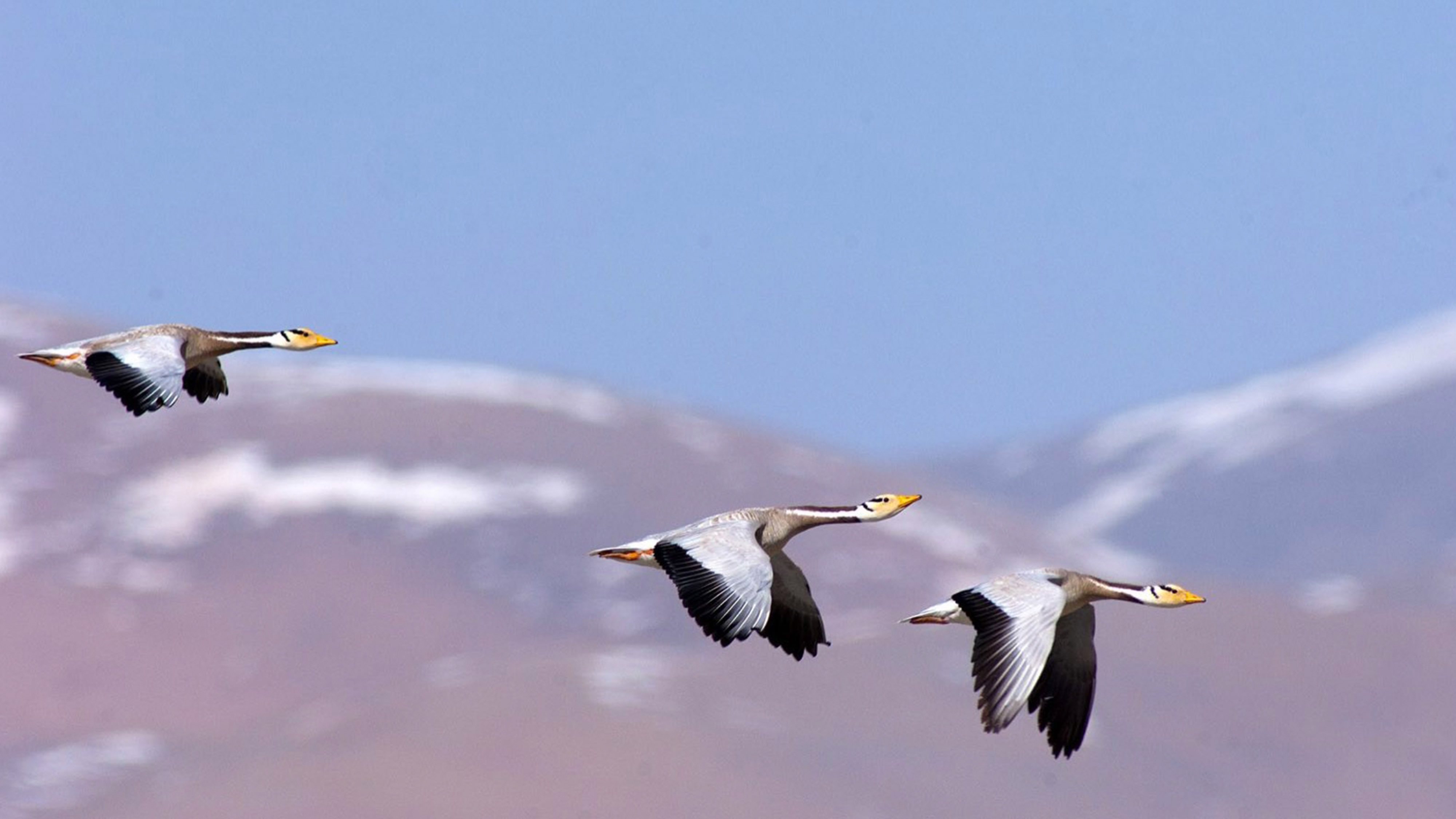
"It’s an amazing bird," whispered Huang Xiaohua, as he practically crawled near Bande Lake, camera in hand, looking back at me to make sure I wasn’t doing anything to scare off the birds. I was breathing rather loudly thanks to altitude sickness – we were 4,800 meters above sea level, on the Qinghai-Tibet Plateau in northwest China.
I had come to the plateau in the last few days of the year in which it is possible to observe bar-headed geese, the world’s highest flying birds. In November, they will soar over the Himalayas, reaching altitudes of over 7,000 meters, nearly as high as commercial aircraft, to reach their winter refuge in India.
"I keep wondering, how do they do it?" said Huang. As we approached, the birds flapped their wings and took off. Huang sighed in disappointment – "It’s so hard to photograph them!"
In fact, if anyone was to get close to the birds in the wild, it would be Huang and his teammates. He is a conservationist with the Chinese environmental NGO Greenriver, based in a small town near the start point of China’s mighty Yangtze River on the plateau, surrounded by mountains and vast grasslands inhabited only sparsely by Tibetan nomads.
Every spring, before the bar-headed geese return to Qinghai for breeding, the team tug their equipment through snow-capped pastures and across half-melted lakes on rubber boats to set up monitoring camps near Bande Lake, a major breeding ground for the birds.
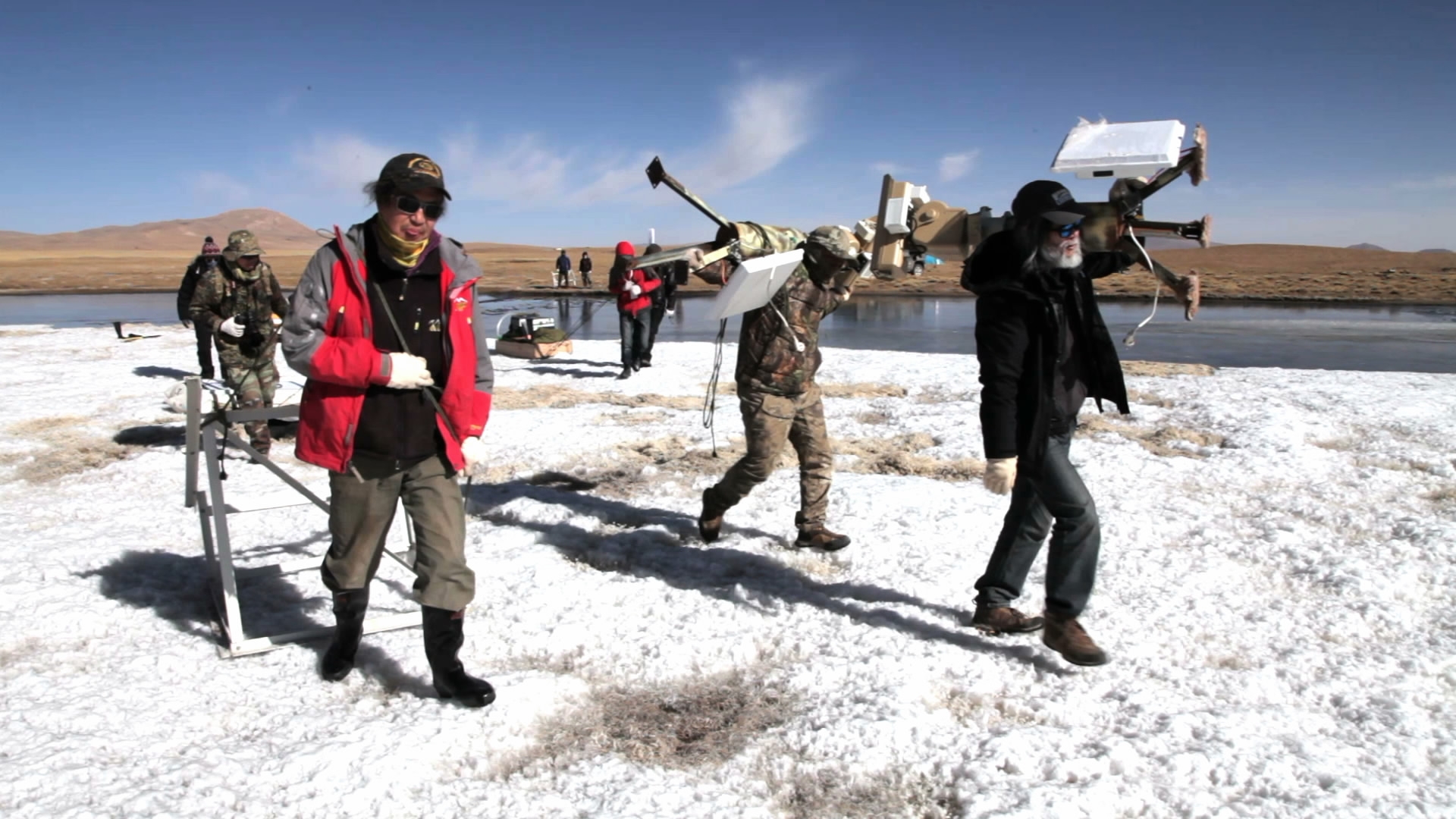
Conservationists transport equipment for monitoring. /Huang Xiaohua, Greenriver
Conservationists transport equipment for monitoring. /Huang Xiaohua, Greenriver
"This is what we cook with while camping out," said Huang, a 30-year-old former chef at a hotel in southern metropolis Guangzhou, pointing at a pile of Yak excrement left from the spring. "This is gold," he said, holding up a large piece. "You get why if you camp out in the snow for weeks, if not months." There’s no trace of the modern world here; no houses, no cell signal, just the occasional visit of a herd of yaks, their owners’ tent invisible in the snow.
With video cameras and telescopes, the team spend their time in this tough environment documenting the birds’ numbers and analyzing their behavior.
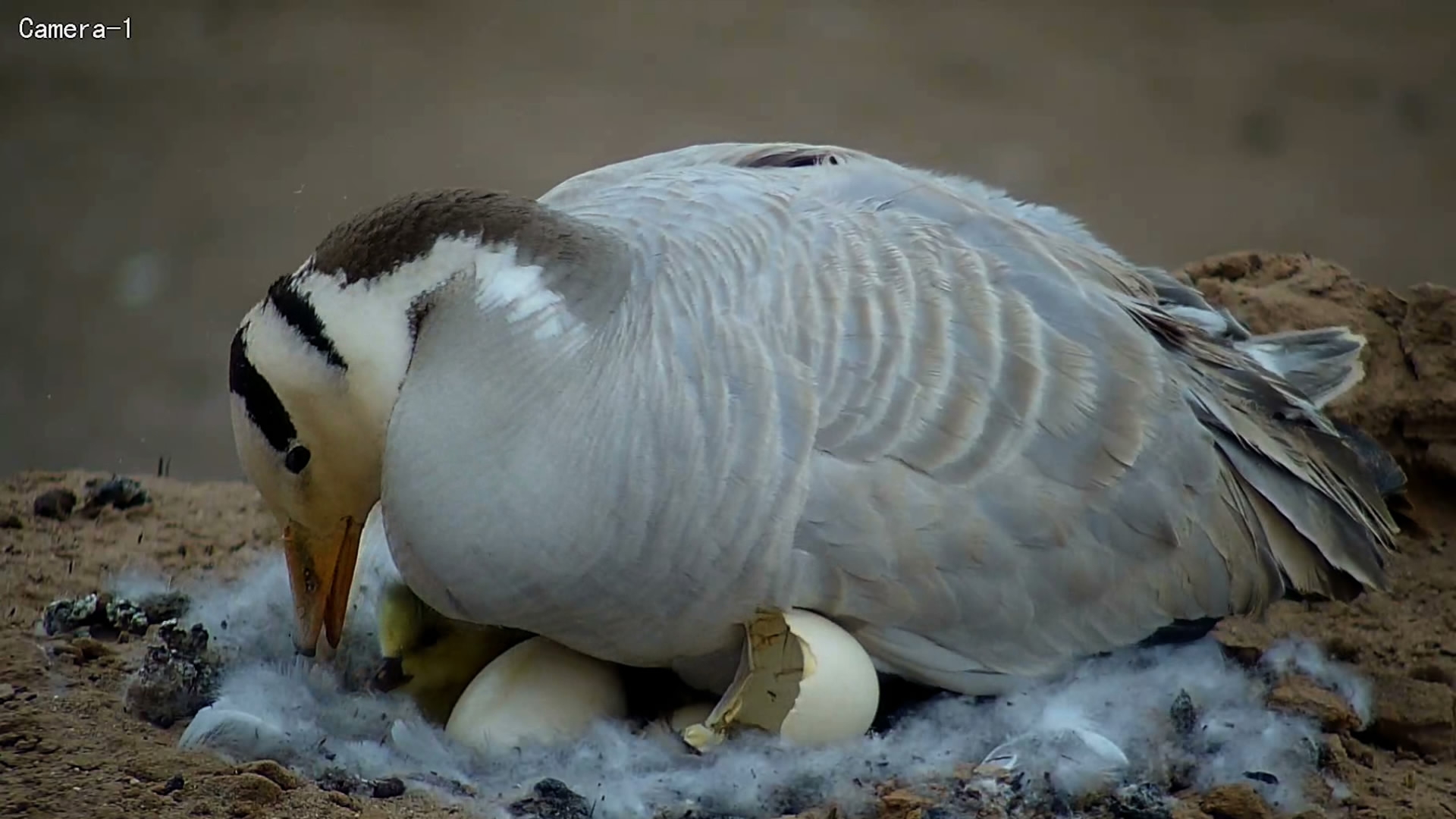
Surveillance photo of a bar-headed goose laying eggs. /Greenriver
Surveillance photo of a bar-headed goose laying eggs. /Greenriver
Bar-headed geese weren’t always given such protection locally.
"Who would’ve thought these birds were so special?” said Huang’s colleague, Tsering, a 31 year old from a local Tibetan nomadic family. “We used to see them every day and we just thought they were regular wild geese."
Tsering remembers collecting their eggs by the bucket load as a child for food. "The grownups in the family were very much against it because it was against the Buddhist precept of not taking life."
Conservationists estimate up until 2012, when the team started their bar-headed geese protection program, more than 2,000 eggs were stolen by people every year. Looking back, Tsering thinks he’s responsible for the birds’ near extinction in the region. "So the shock I experience when I heard what these birds can do was even greater than for other people."
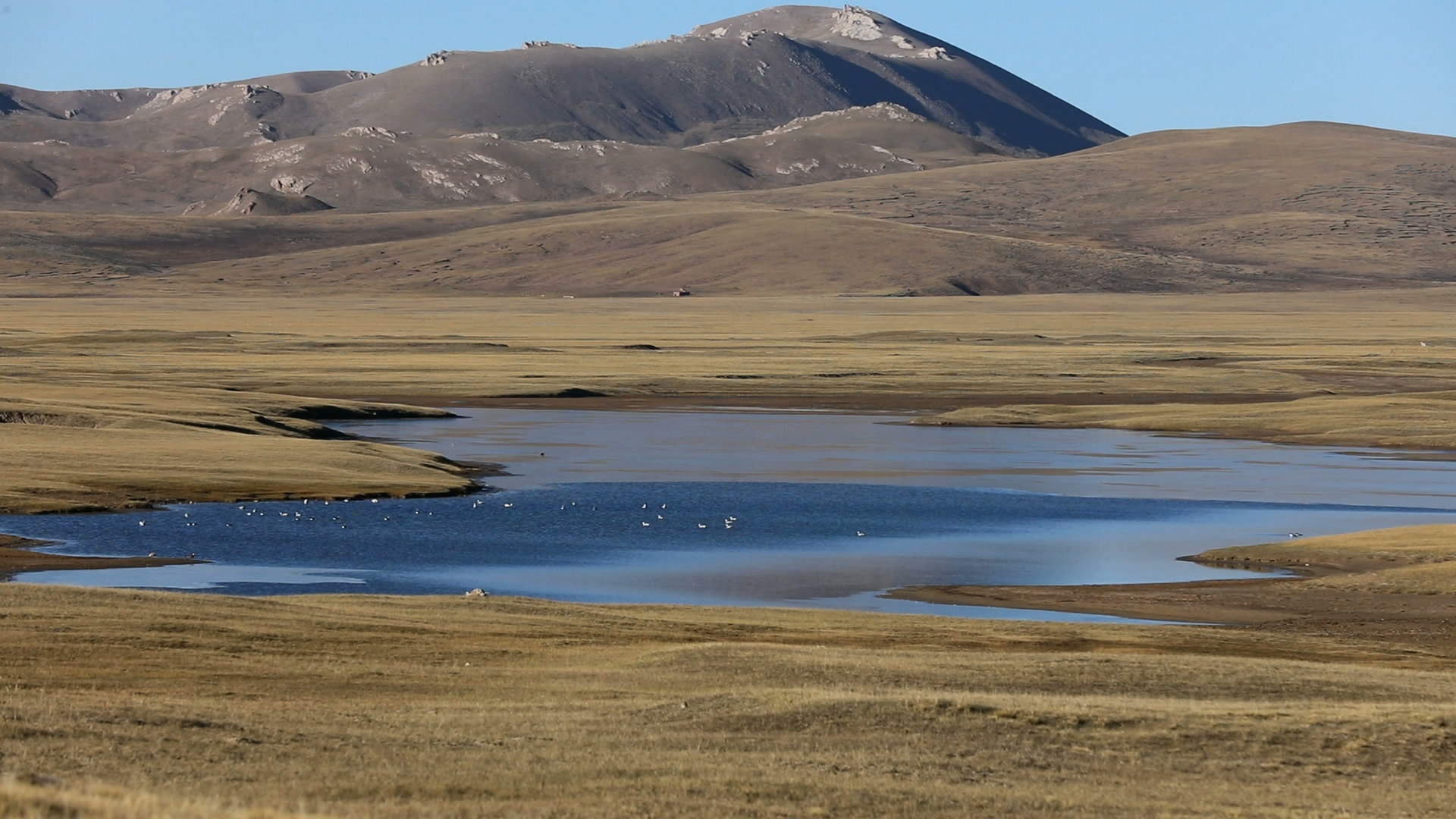
The Qinghai-Tibet Plateau is an important breeding ground for bar-headed geese. /CGTN Photo
The Qinghai-Tibet Plateau is an important breeding ground for bar-headed geese. /CGTN Photo
Bar-headed geese have fascinated biologists for decades. A study in 2015 revealed the birds save energy by "hugging" landforms in what researchers called a "roller-coaster flight", taking advantage of drafting and wind patterns, even though it means repeatedly losing hard-gained altitude.
"No scientific explanation is going to stop my amazement," said Tsering. He is the director of Greenriver’s bar-headed geese program, and can spend up to seven months each year camping out in the wild.
"You’d jump into the freezing waters of a lake for a shower after a few days," he said. "You just stop caring about the cold."
He’s got the skin and build of a typical young Tibetan man. During my five-day stay at the conservation station, I’ve seen him skin and butcher a goat in less than half an hour, and twice rescue a vehicle that got stuck in swamps.
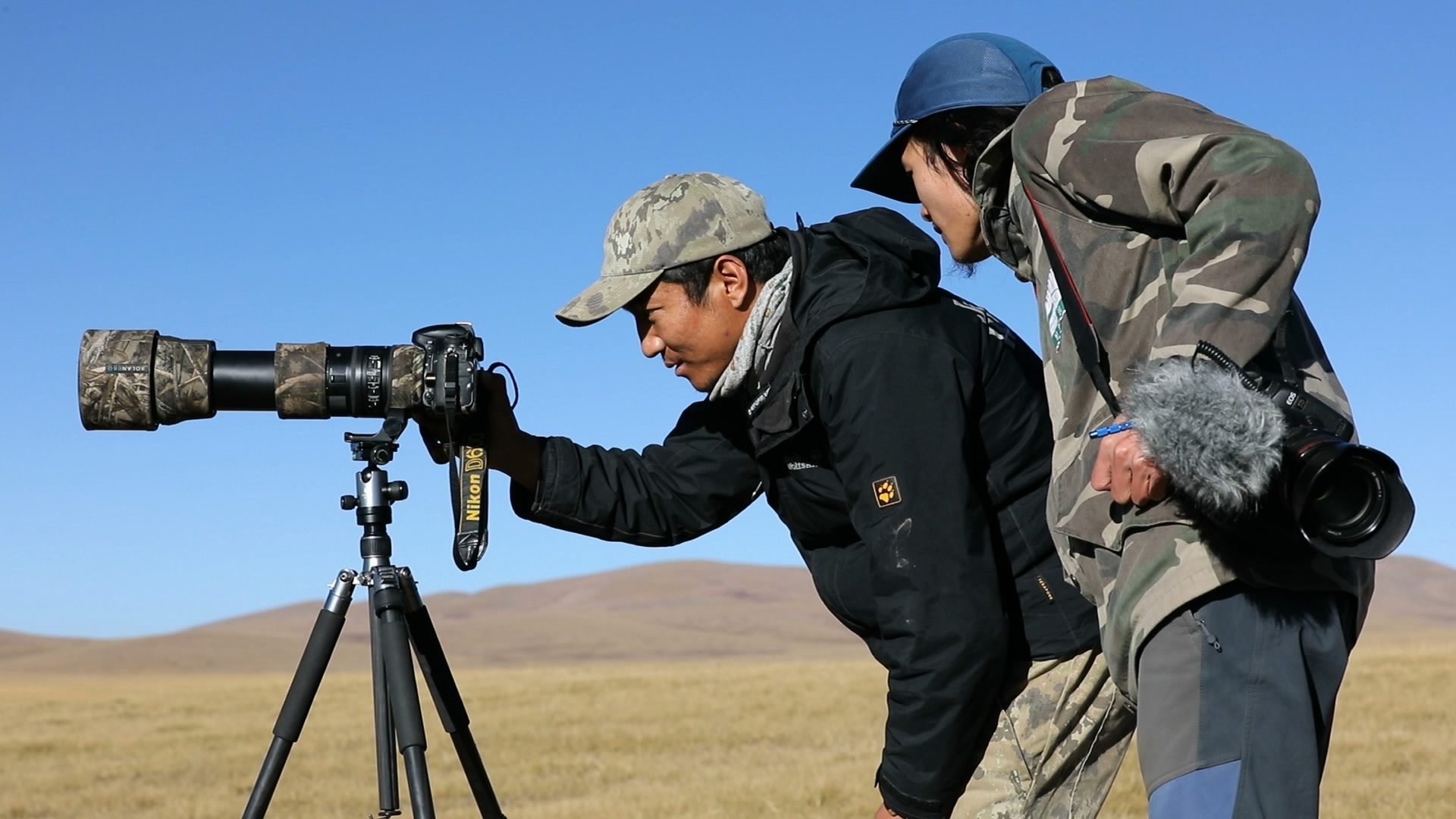
Huang Xiaohua and Tsering filming in the wild. / CGTN Picture
Huang Xiaohua and Tsering filming in the wild. / CGTN Picture
"I’m from here, so it’s only natural for me to protect my home," he explained. "Plus, my mother thinks I’m atoning for my sin for taking the eggs as a child."
"It’s certainly not a life for everyone," added Huang. "Some volunteers come and can’t wait for their term to be over." He’s not among those people.
"You get used to it pretty fast," according to the conservationist. "The landscape always keeps you entertained."
It was certainly quite an experience for me. I have to admit though, I was quite happy to get back to the city.

SITEMAP
Copyright © 2018 CGTN. Beijing ICP prepared NO.16065310-3
Copyright © 2018 CGTN. Beijing ICP prepared NO.16065310-3